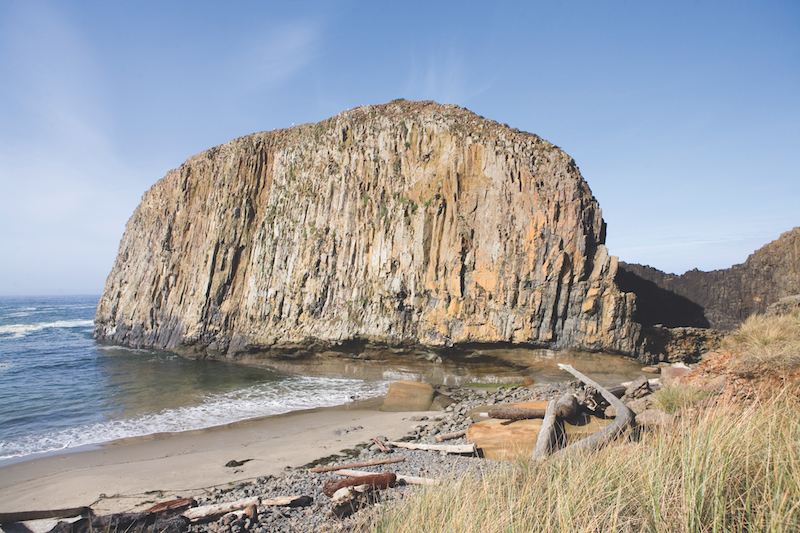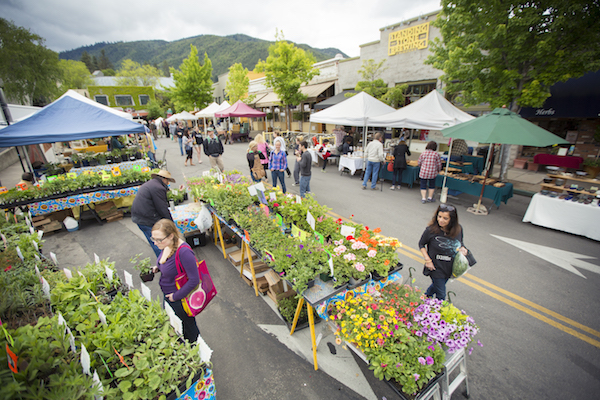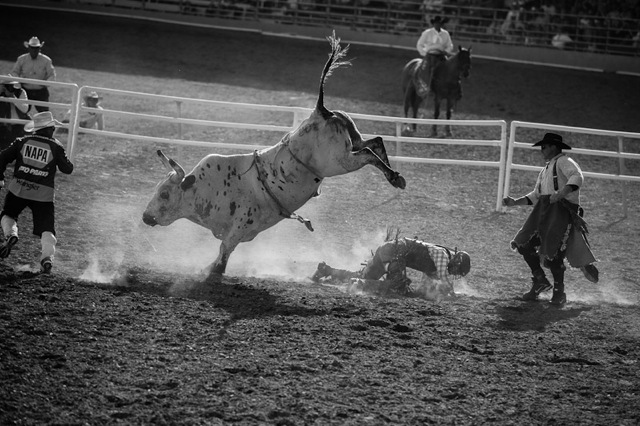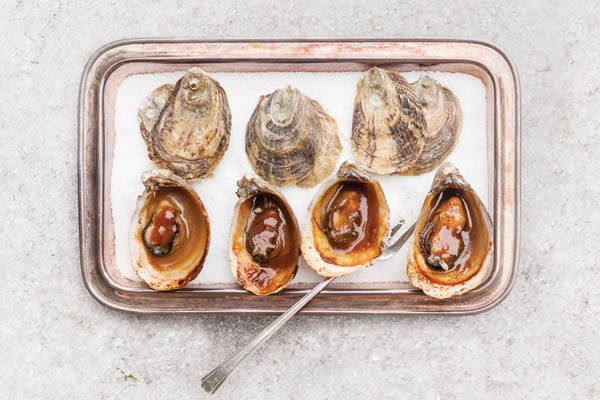Foraging for dinner in Western Oregon
written by Felisa Rogers
With its sheltered coves and temperate rainforests, western Oregon is a foragers’ paradise. Fall and spring get the most press, but winter is the best time of year to forage for mussels, and several varieties of local mushrooms are hardy enough to withstand frosty nights. The enterprising scavenger can put food on the table all year—provided you don’t mind getting up early and getting wet.
On a cold November morning, I woke up at dawn to drive to the coast. My mission? Combat the winter blues by foraging for dinner. Armed with pliers, a utility knife, gloves, a bucket and my shell sh foraging permit ($10 for residents, good for a year), I parked at Seal Rock, south of Newport. To make access easier, I’d planned my expedition for a minus tide, which occur a few times a month. The panorama of sea and sky nearly took my breath away. The extra-low tide revealed a paradise of pools, and the rocks glistened with the blue-black shells of millions of California mussels.
Mussels cling to the rocks with silky laments called byssus threads, which are so strong and resilient that scientists are trying to synthesize the material for use as a marine adhesive. A knife is necessary to pry them from their colonies. Though they ranged from the size of my pinky nail to the length of my hand, I looked for shells about the size of my thumb— bigger mussels can develop an iodine taste. I dropped a few into my bucket and moved to the next rock, taking care not to harvest too many from one spot. Despite their amazing grip, the mollusks rely on their neighbors for stability and protection from the relentless surf. In twenty minutes, my bucket held dinner. Covering my haul with a layer of wet seaweed, I paused to take it all in—the surf streaming in and out beyond the sand flats, the tide pools jeweled with starfish and sea anemones.
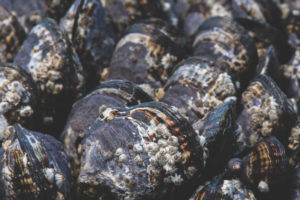
By the time I headed inland along the Alsea River, the clouds had darkened over the Coast Range. I turned up a logging road and kept an eye out for likely habitat—hedgehog mushrooms like to grow in evergreen forests with thickets of huckleberry. In the Siuslaw National Forest, that’s a lot of territory to choose from. Parking in an auspicious spot, I traded my waders for trainers and my bucket for a paper bag, but kept my pocket knife. This time I wouldn’t need to carry a permit—you can legally forage up to a gallon of mushrooms on national forest or BLM land. (Malheur, Umatilla and Wallowa-Whitman national forests will allow you to gather up to 5 gallons.)
• Before harvesting shellfish, contact ODFW to make sure the harvest area is not subject to a conservation closure, and then call the shellfish safety hotline to make sure the harvest area is not closed due to biotoxins.
• If you’re foraging for a mushroom variety for the first time, go with an experienced forager who can verify your identification.
• Cleaning each mushroom in the field saves time later because one extra dirty mushroom can grub up the entire bag of loot.
• Be respectful of habitat and others—never take more than you can eat.
A barrier of salmonberries grew between the road and the slope, and I was grateful when the prickly underbrush gave way to needled forest floor. But the grade was steep, and my heart rate was up before the road was out of sight. Thrashing through the sword ferns, I had a sinking sensation. Firs and hemlocks loomed out of an understory of huckleberry, but I wasn’t seeing mushrooms of any kind—usually a bad sign. I’m no stranger to going home empty-handed. I trudged on, breathing more heavily.
I was nearly to the top of the mountain before I spotted my first hedgehog mushroom. Hydnum umbilicatum is one of the easiest mushrooms to identify, and thus a good quarry for beginner foragers. Some hedgehogs are golden or orange, but the little caps on my hill were creamy white, tinged with apricot. Instead of gills, the undersides were furred with tiny white teeth—like a hedgehog’s bristles. Kneeling in the loam, I cut the mushroom stems from their bulbous anchors and tapped the caps to shake loose extra dirt. My paper bag now had a pleasing heft.
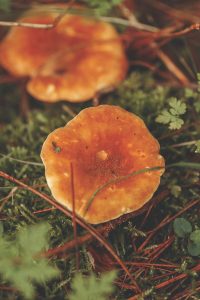
Moving though sword ferns and stepping over fallen alders, I kept my eyes on the ground. The hunting instinct had kicked in and the rest of the forest faded into background. Looking for that telltale flash of cream, I became immune to sights and sounds that might normally have arrested me—a fairyland of moss on an old-growth log, the wind rustling through the winter branches. Only when I spotted fresh cougar scat did I pause and look up. The forest seemed impossibly still and quiet. Somewhere, a big cat was nestled in a hollow or crouched on a branch. Come to think of it, maybe I had plenty of mushrooms.
At home again that evening, I surveyed my haul. It hadn’t been a red letter day for fungus, but I’d gathered a few handfuls of caps to round out dinner. While the mushrooms sautéed in garlic and butter, I steamed the mussels, taking care not to overcook. Using a cheese knife to pry the mussels from their shells, I tossed everything with pasta alfredo and fresh parsley, poured myself a glass of wine, and took my first buttery bite. The bright orange mussels were tender and tasted like the sea, while the succulent mushrooms retained a hint of the wood. Dinner was my day, distilled.


